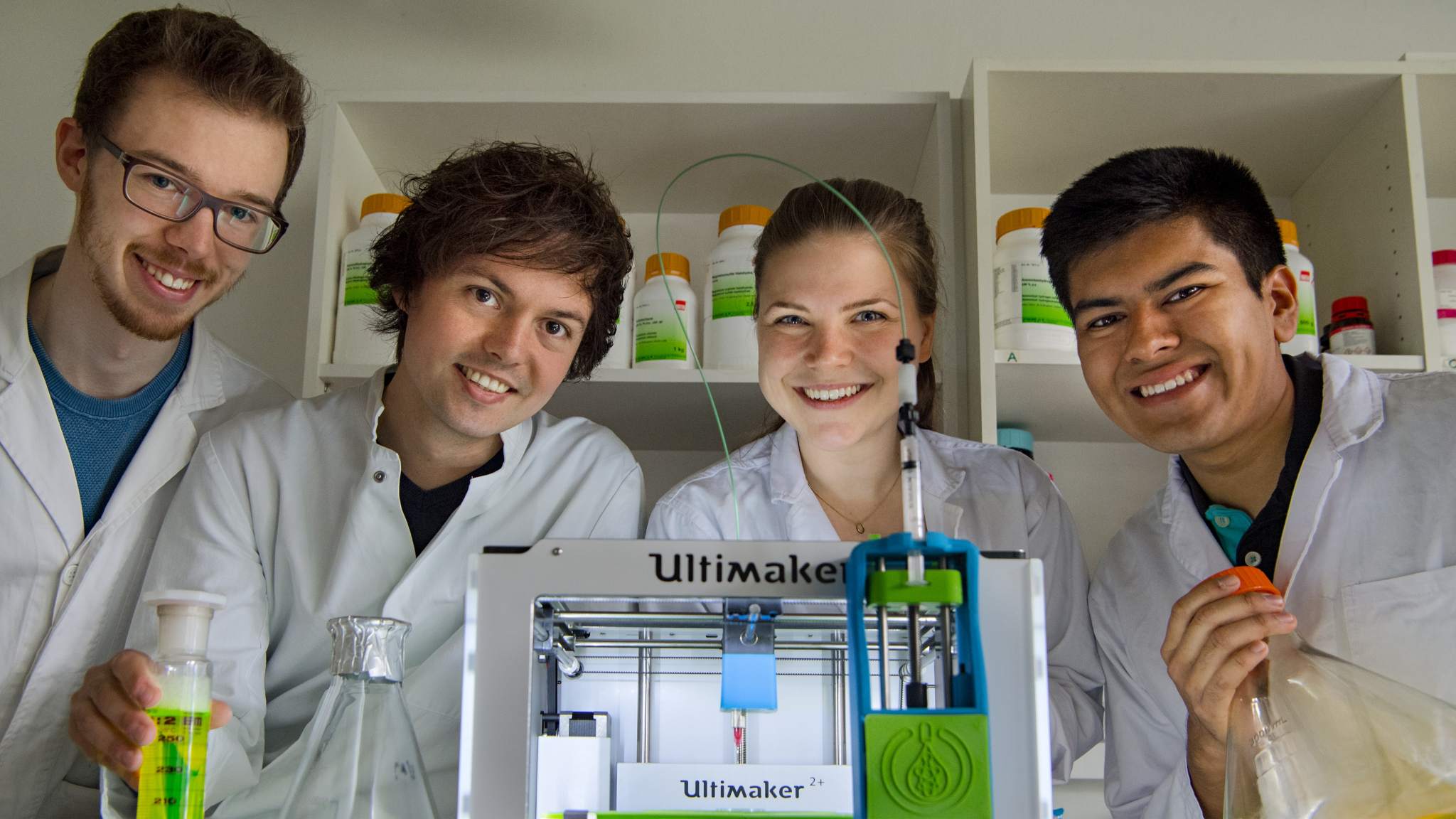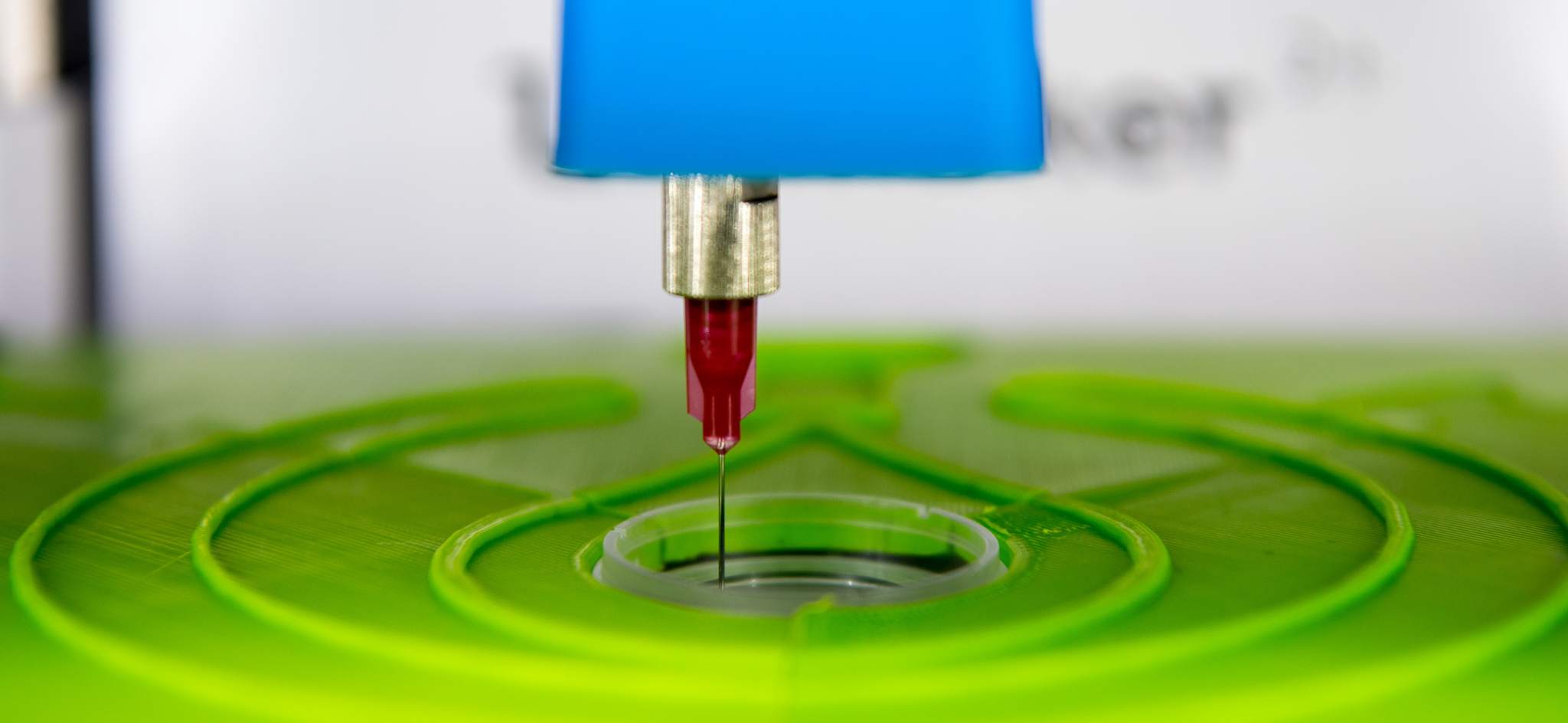Researchers at the Germany’s Technical University of Munich presented their biotINK project at the International Genetically Engineered Machine 2016 Giant Jamboree in Boston on October 29. BiotINK aims to make printing complex 3D cellular structures cheaper, easier and faster by using a new technique that creates inks using biotin (vitamin B7) and streptavidin, a protein harvested from bacteria.
The Issue with Tissue
The traditional process for growing artificial tissue relies on scaffolding, since this technique allows cells to be held in place while they develop. In this process the 3D printed grid like structure, made of PLA normally, is seeded with organic cells that slowly grow throughout all the structure filling all the internal spaces. As the organic cells multiply, eventually the scaffold degrades or is removed, leaving behind only the organic tissue.
There have been recent advances this bioprinting method, such as a new proposal for bioreactors from Greek scientists. In any case, scaffolding has its limitations; it is costly, the cell maturation process takes a long time and has certain size limitations.

Team Munich’s Idea
The researchers, lead by Dr. Arne Skerra, propose a new method using desktop 3D printers to print organic 3D cellular structures. The method arranges two different type of components (genetically engineered cells and proteins) into a structure that quickly polymerizes creating a rigid structure. This two components are linked by a very strong bonding reaction, also found in nature, called the biotin-streptavidin interaction.

Bioprinting, one step closer
Bioprinting is an sector of 3D printing that has many potential applications in the health research field. Among them, testing and experimentation for medical studies is a particular field where tissue engineering is crucial, for example as reported by 3DPI the latest advancements from a team at Harvard. This particular application for tissue engineering allows a faster understanding of human diseases, improving the rate at which scientists develop potential cures.
Perhaps a key to the potential success of this project is their openness to the bioprinter community through their website, in which they have documented publicly their project and share instructions to turn your normal 3D printer into a bioprinter. This invitation to collaborate celebrate the internet’s main purpose of being an open communication space, as explored at MozFest last weekend.
Featured image via the Technical University of Munich, by Andreas Heddergott.



